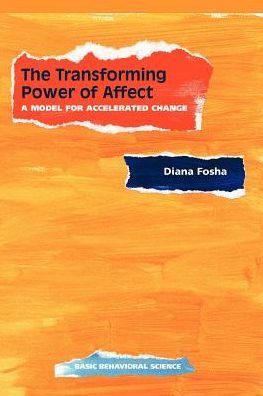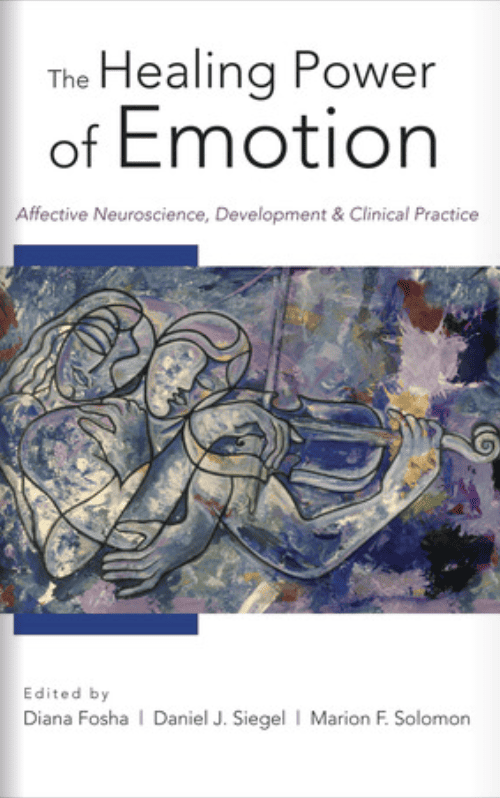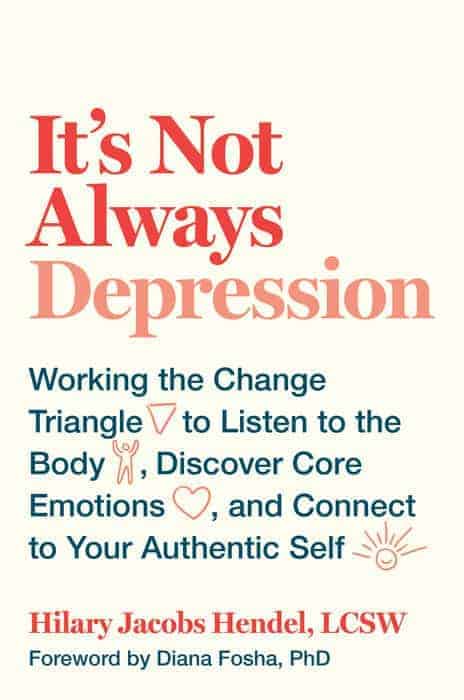Therapy
Accelerated Experiential Dynamic Psychotherapy (AEDP): Process, Benefits, Effectiveness
THC Editorial Team November 23, 2021

Contents
- Overview
- What Is Accelerated Experiential Dynamic Psychotherapy (AEDP)?
- Background/History of AEDP
- How Does AEDP Work?
- Conditions Commonly Treated by AEDP
- Potential Benefits Derived from AEDP
- Effectiveness of AEDP
- Summary/Key Takeaways
Accelerated experiential dynamic psychotherapy (AEDP) is a psychotherapeutic approach to helping people experience positive change in their overall sense of well-being. AEDP views psychological pathology in adulthood as rooted in emotional and physiological stress resulting from trauma during childhood that caregivers did not effectively address. AEDP practitioners believe these traumatic experiences contribute to disordered relationships and emotions as children grow older. Therapists use AEDP to treat many different problems and conditions, including posttraumatic stress disorder (PTSD), eating disorders, dissociative disorders, and attachment issues in adulthood, among others.
What Is Accelerated Experiential Dynamic Psychotherapy (AEDP)?
AEDP promotes healing to help people change problematic behaviors by processing emotionally traumatic experiences. AEDP draws from other aspects of experiential therapy, including emotion-focused therapy, body-focused therapy, and intensive short-term dynamic psychotherapy, and is informed by the neuroscience of change, transformation theory, attachment theory, positive psychology, and emotion theory.1,2,3
Although many people try to avoid dealing with difficult emotional events, these experiences are viewed by AEDP practitioners as obstacles to be processed.1 AEDP practitioners believe that by processing traumatic experiences, people achieve greater courage and confidence. However, many people lack the tools or experience to address unresolved emotional trauma on their own—or would find doing so debilitating—necessitating the help of therapists to learn how to manage their difficult emotions.
Background/History of AEDP
AEDP is a relatively new type of psychotherapy that psychologist Diana Fosha developed after completing postdoctoral training under the developer of intensive short-term dynamic psychotherapy (ISTDP), Habib Davanloo.2 In 2000, Fosha published The Transforming Power of Affect, bringing her new approach to psychotherapy to the public.4 Overall, whereas ISTDP tends to employ a more confrontational approach, AEDP practices relentless empathy and validation of the client’s experiences. That said, certain ISTDP methods are used in AEDP, including (1) the triangle of conflict, which shows how relationship patterns may shine through in past, present, and therapeutic relationships, and (2) portrayals, or mental imagery used to amplify and deepen emotions.5,6
AEDP continues to develop based on research into the processes involved with change, outcomes of psychotherapy, and the role of positive affect. Fosha is now the director of the AEDP Institute, an organization that offers training and certification to AEDP psychotherapists.2 AEDP practitioners video record their therapy sessions as a standard practice, and these videos are used in clinical studies and to train new therapists in this practice.7
AEDP is largely informed by attachment theory, specifically the concept of the therapist acting as a secure base from which the client can explore difficult and traumatic experiences.1 A secure base is usually a child’s caregiver, who is reliably physically present for the infant as they explore new environments.8 AEDP emphasizes the importance of developing a relationship between client and therapist in which the therapist acts as a secure base that was missing or inadequate in the client’s childhood.9 In AEDP, the therapist develops this relationship to make the client feel safe when delving into traumatic memories and emotions.1
How Does AEDP Work?
AEDP psychotherapists view clients’ capacity to heal as being innate. This self-healing ability can be blocked by emotionally traumatic experiences, but, according to AEDP, people are able to access it through being heard and understood. Therapists work with clients to explore the incidents that wounded them and create change by effectively processing their pain through sharing and trust building.10
Fosha determined four psychological states that a client passes through during AEDP:6
- State one: Distress, symptoms, anxiety, shame
- State two: Core emotions
- State three: Transformational affects
- State four: Core state
When in the first state, the client shows emotional distress through anxiety, shame, guilt, and dysregulated emotions. A therapist uses empathy, attunement, and defense identification to shift into the second state. While there, the client can experience their authentic core emotions, including sadness, anger, fear, and joy. In the third state, as the client feels transformed, they might experience pride, joy, or gratitude. Additionally, they may feel sorrow or mourning in response to certain realizations or reflections about themselves. Finally, the core state is achieved when the client feels calm and “right” and feels that they have developed a coherent self-narrative. They may feel self-compassion, wisdom, and generosity. Fosha sees this final state as the deepest emotional experience.6
One of the core techniques of AEDP is metaprocessing, or reflecting on the therapeutic interaction. A question the therapist might ask is “What is it like to feel that with me here right now?”11 Unlike many other therapies, which see the therapist’s commentary as the sole evaluation of effectiveness, AEDP considers both the therapist’s comment and the client’s experience of and response to the intervention. Metaprocessing facilitates Fosha’s third psychological state, transformation.6
An AEDP psychotherapist will be open and ask questions without judgment and work to build rapport with the client. This approach is meant to build a secure foundation through which the client can feel safe and more open to sharing their traumatic experiences and difficult emotions with the therapist.1 The AEDP practitioner will emphasize that the client is not alone so that the client can feel confident exploring difficult experiences and emotions. The therapist will strive to be compassionate and present throughout the process, enabling the client to safely experience their emotions to heal and realize positive change. AEDP practitioners are not passive in their approach but instead work hand-in-hand with clients during the therapeutic process.10
During each session, the AEDP therapist will watch for different indicators of what the client is experiencing, including tone of voice, facial expressions, bodily movements, and gaze. By doing so, the therapist can then help the client explore their emotional and cognitive experiences further. Exploring and expressing complex emotions and traumatic experiences without judgment and with understanding is thought to allow people to benefit from emotional healing.10
AEDP seeks to help clients with PTSD, and complex PTSD better regulate their memories and emotions, including distress, fear, and anxiety, and promote adaptive action towards their current life circumstances.
Conditions Commonly Treated by AEDP
Since AEDP encourages client safety and affective processing, it is helpful for treating a wide variety of psychological conditions, including:3
- depression
- anxiety
- posttraumatic stress disorder
- problems in interpersonal relationships
- low self-esteem
- challenges with avoidance and denial
- adult attachment challenges
- eating disorders11
Potential Benefits Derived from AEDP
Beyond alleviating symptoms of psychological disorders, AEDP offers several potential benefits, including transformative, positive change. Through AEDP therapy, people might improve their functioning, gain greater self-compassion, and develop better relationships with others. Couples undergoing AEDP therapy might achieve a greater feeling of connectedness and intimacy within their relationships. People who suffer from anxiety or depression might feel a greater sense of contentment and well-being.
Effectiveness of AEDP
Numerous studies have demonstrated the efficacy of AEDP as a therapeutic approach. In a 2016 meta-analysis of 28 randomized controlled studies, researchers in Sweden found that experiential dynamic therapy was associated with considerable improvements in symptoms experienced by people with anxiety, depression, and other general psychiatric conditions. The researchers also found moderate improvements in problems with interpersonal relationships and global functioning.12
Though there have been few clinical trials for the use of AEDP in treating PTSD, experiential therapies have some empirical support for their effectiveness in treating trauma survivors. The secure base aspect of AEDP allows clients to eliminate their learned fears and reduce their anxious avoidance of traumatic memories.13
In addition, a 2018 case study found that AEDP was an effective therapeutic approach for a bilingual woman who suffered from complex PTSD and depression following relationship trauma. Nicole Vigoda Gonzalez, a psychologist at Columbia University, found that AEDP helped “Rosa,” her client, to better process her emotions and traumatic experiences within the context of her cultural identities.14
In a case study analysis of two cases involving AEDP, researchers examined why one case was successful while the other was not. In the successful case, the client showed an improvement in positive affect and secure attachment, whereas the client in the unsuccessful case presented a decrease in positive affect. The researchers suggested that, in the successful case, keys to helping the client experience transformative change were the strong therapeutic alliance between the client and therapist that was authentic, collaborative, and secure and the facilitation of a corrective emotional experience.15
AEDP has shown to be particularly effective in a teletherapy setting, which has been useful throughout the COVID-19 pandemic. It has allowed many to continue receiving adequate treatment.16 The therapeutic relationship emphasized in AEDP has also helped people who have struggled to handle the social isolation and loneliness caused by the pandemic to have an emotional connection.
Summary/Key Takeaways
Accelerated experiential dynamic psychotherapy helps people process and manage traumatic experiences and negative emotions safely within the confines of a therapeutic relationship. AEDP has been shown to effectively treat clients with many different psychological conditions and improve people’s ability to relate to others healthfully. People who are interested in AEDP should look for a therapist who is certified in this approach, and can start by checking the AEDP Institute’s directory.
















